#was this just an early version of 425 then?
Explore tagged Tumblr posts
Text
BNHA 426 raws spoiler. No entry if you don't want that. And don't expand my tags either.
Gosh I love this. Soba being Touya's favorite was a lovely punch in the heart.




Since the siblings were distant with each other, the first thing they wanted to know is what the other's favorite food was. It's their way of trying to connect after so long.
Like how Fuyumi made their family dinner that one time. They use food as common ground.
And like how soba is Shoto's favorite, and Shoto couldn't be understood by his siblings before as someone too far away, it's the same favorite food for Touya—a kid no one in the family could look straight at, or understand.
But after finding out their favorite food, the family has a small ground to start trying to reach out and understand that prodigy that once stood too far. Learning about soba was their way of trying to reconnect.
#i was right about touya being that black panelllll#i thought the todorokis all having scars was cool#THEN TOUYAS FAVORITE FOOD IS SOBA#gosh i love that punch to the heart it was so warm and OOF#the same feelings as watching julius and ferris kill subaru in arc 3. something about it just warms the heart when its also#twisting your guts in a way#spoilers#bnha#boku no hero academia#my hero academia#mha#bnha spoilers#mha spoilers#natsuo todoroki#touya todoroki#dabi#shoto todoroki#bnha 426#WHY DID THIS POST EARLY#i dont mind the first tag being visible bc other versions of 425 showed dabi apparently#which i only found out afterwards#was this just an early version of 425 then?#im on mobile so i dont know how many tags are visible. i just see 1 and a halg
15 notes
·
View notes
Photo
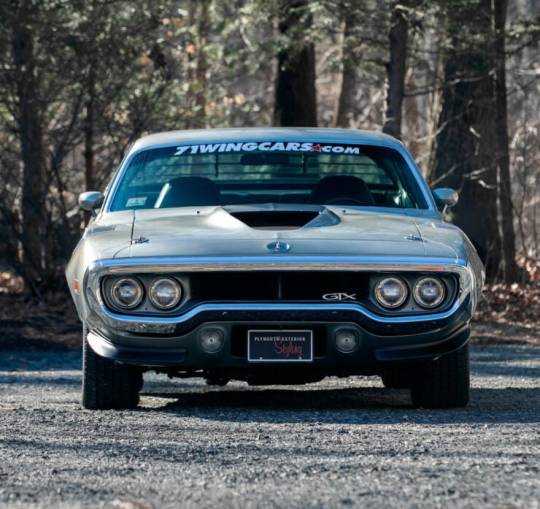
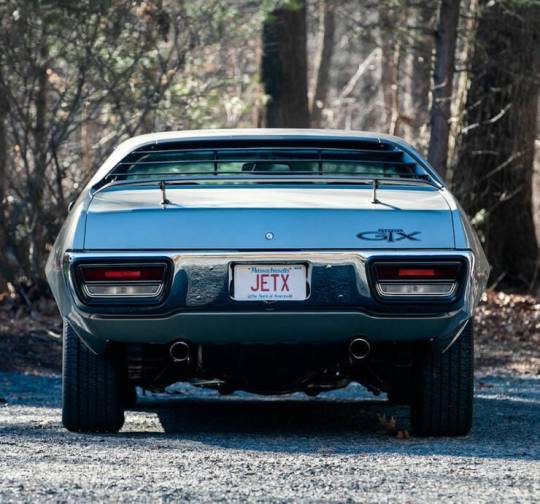
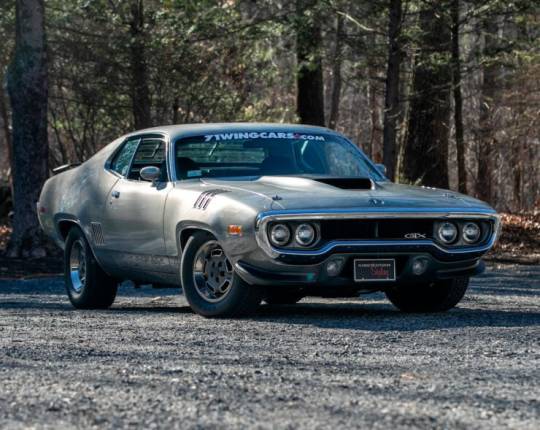




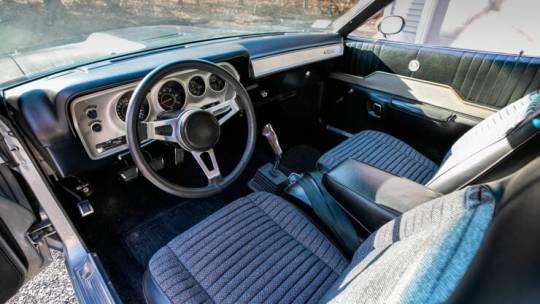

Plymouth GTX Concept (1 of 1)
This is the only 1972 Plymouth GTX you’re ever likely to see because it’s the only one that was made. And it wasn’t made by Plymouth, it was made by Gary and Pam Beineke using formerly top secret images from the Chrysler archives. The Plymouth GTX is a muscle car that was produced by the Plymouth division of Chrysler Corporation from 1967 to 1971. It was introduced as a high-performance version of the popular Plymouth Belvedere and was marketed as a “gentleman’s muscle car” with good performance, but with a more luxurious interior and smoother ride than some of its more hard-edged counterparts. When it was introduced the GTX was available in two-door hardtop and convertible body styles and was powered by a 440 cubic inch V8 engine that produced 375 horsepower. It also featured heavy-duty suspension, power brakes, and a floor-mounted four-speed manual transmission as standard equipment.In 1968, the GTX received a facelift and a new optional engine – the legendary 426 cubic inch Hemi V8 that produced 425 horsepower. The Hemi was claimed to be the most powerful engine available in any American production car at the time, and it gave the GTX serious street cred among muscle car enthusiasts.Over the next few years, the GTX continued to evolve with various engine and styling updates. In 1969, the car received a new front-end design and a new optional engine – the 440 Six Pack, which featured three two-barrel carburetors and produced 390 horsepower.In 1970, the GTX received a completely new body style and a revised engine lineup that included the 440 Six Pack and the 426 Hemi, which was now rated at 425 horsepower.
Sadly by the early-1970s it became clear that the muscle car era was coming to an end, and by 1971, rising insurance rates and tightening emissions regulations had taken their toll on the high-performance car market in the United States.
For 1972 the GTX name was relegated to what was essentially only an option package, called the Road Runner GTX. Any Road Runner that was ordered with the 440 V8 received Road Runner GTX badging, and this continued until the model was phased out in 1974, in the dark shadows of the 1973 Oil Crisis.
There were rumors of a potential comeback for the GTX in the late 1990s however a production car never materialized.
The car you see here is the only one of its kind in the world, it’s a 1972 Plymouth GTX but as mentioned further up, it wasn’t actually built by the Chrysler Corporation. Each year the husband and wife team of Gary and Pam Beineke build one car. And not just any car, but a car that previously existed only in the Chrysler archives. They find original drawings and images of planned models that never made it into production, and then they painstakingly build the car themselves. Interestingly this work isn’t their full time job. Gary is an attorney and a registered contractor, and Pam is a registered nurse who works in the operating room. They call the series of cars that they have built “What If’s” – and they do it all on nights and weekends while holding down full time jobs.
The couple first came across the planned 1972 Plymouth GTX when looking over the uncovered archive items discovered by Steve Juliano. This car was designed by John Herlitz and it was far from just a stying exercise, multiple full scale models were made and it did seem for a time as though it would be the successor to the 1971 Plymouth GTX.
Sadly it was not to be. The perfect storm of increasing emissions restrictions and crash safety regulation combined with soaring insurance premiums on muscle cars resulted in demand dropping significantly by the early 1970s.By the time of the 1973 Oil Crisis, with its sky high gasoline prices, automakers were already focusing on smaller and more fuel efficient vehicles. The GTX name did live on for a short time, as part of the aforementioned Road Runner GTX package on 440 V8 equipped cars, but it was killed off as a free standing model after 1971.
Gary and Pam Beineke took it upon themselves to right this wrong. They sourced a 1971 Road Runner and set to work creating the car that Herlitz had designed all those years ago in the late 1960s. They poured over the images of the long destroyed models, and they were able to discuss their work with Herlitz her offered them guidance on what the production ’72 GTX would have looked like.
119 notes
·
View notes
Text

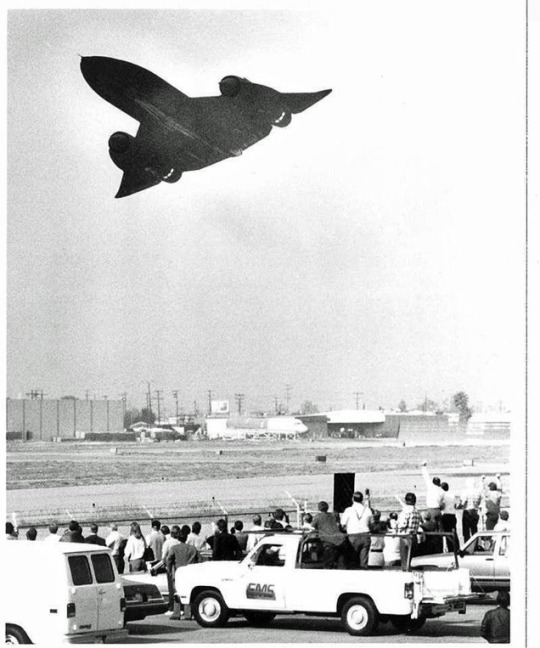

The SR-71 Was Close to Perfect
A member of the Blackbirds’ ground crew looks back on the airplane’s flight-test beginnings to the end of the Blackbirds
This first photograph was taken of the SR-71 #972 when it was in a hangar near Dullas airport, waiting for the new Smithsonian Air and Space Museum to be open. Photo Eric long. The other two photographs were taken at Palmdale California December 21, 1989.
After a 480-mile flight from Beale Air Force Base in California, the midnight-black airplane swooped down to about 300 feet above Burbank Tower, less than 30 seconds after its scheduled arrival time of 12 noon. It made an easy half-roll, then completed two more passes. The parking garage roof where I stood reverberated with cheers, but as the Blackbird came in for its final pass, a hundred feet off the runway, and then pulled up just beyond the tower, the crowd fell silent. was December 1989, and this flyby, a gift to Lockheed employees from Ben Rich, head of Advanced Development Projects (the Skunk Works), marked the beginning of the end of the SR-71. After much debate in Congress, the Blackbirds were about to be retired. The YF-12A, the earlier, single-seat version of the SR-71, first flew in August 1963 and the Blackbird in December 1964. It was still unsurpassed when it was retired in 1990, 24 years after it officially entered service.
As I watched the SR-71 that December day, I thought back to the airplane’s flight-test beginnings in the early 1960s. I thought of Ben Rich, Ray Passon, Keith Beswick, and so many others whose lives were forever touched by this aircraft. I too was part of the Blackbird team, setting up housing, transportation, and communications—special measures due to the secrecy necessary. And above all of us was designer Kelly Johnson, who had a gift for sharing his ability to innovate and his drive to succeed. The unity of commitment we felt under leadership from Larry Bohanan in engineering and Dorsey Kammerer in production reached new intensity whenever Kelly arrived in the field. Sometimes he would good-naturedly arm-wrestle with people working there. His team members were hand-picked and fiercely loyal to him. He once offered $50 to anybody who could find an easy job to do. He got no takers. When it came to their specialties, the people working on the Blackbird were the best in the company, perhaps in the country or even the world. The last word in reconnaissance airplanes, the SR-71 was capable of flying faster than Mach 3 and above 85,000 feet. In fact, the SR-71 flew so fast that even in the cold of those rarefied heights, the friction of the air heated its titanium skin to 550 degrees Fahrenheit.
On the day the Blackbird took to the air for the first time, many of the ground crews showed up. I had worked all night, but sleep in those days seemed like nothing but a waste of time so I stayed to watch. The weather was perfect for a December day: clear and cold, with snow on the surrounding mountains. Somewhere around 8 a.m. the desert silence was shattered by the sound of the twin Buick V-8 engines used for the starters. Later, when the Blackbirds operated at their base at Beale, they had permanent start facilities in their hangars, but in the early days two highly modified 425-cubic-inch Buick Wildcats, an estimated 500 horsepower each, were used to turn a massive starter shaft that was inverted into the first one, then the other of the SR-71’s J-58 engines. One sound I shall never forgot is that of those unmuffled Buicks holding steady at better than 6,000 rpm in excess of 15 seconds at a time, all hours of the day and night. Starting the engines was no easy job.
Kelly Johnson stood by in his familiar dark blue suit and tie, smiling as he had a final word for the pilots.
Veteran crew chief standing next to me could only murmur, “Her enemies will never be natural.”( that was true. It was jealous people that were her enemy.)
Written by Jim Norris
@Habubrats71 via X

25 notes
·
View notes
Text
Not A Love Story Update #1 Part 1
Here is the first update of the new story I'll be playing through while taking a break from my legacy. These updates are quite long over on my Blue Sky, and since Tumblr only allows 30 photos per post, most of these updates are probably going to end up as 2 posts over here.

For Ainsley, makeup was like armor. A barrier between the version of herself she wanted people to see, kind, funny, and smart. Then there was the version of herself she kept under lock and key, the version that nobody, with the exception of her best friend Diego, ever really got to see.

Ainsley ended her morning routine like she did every other day, with a pep talk for herself. A reminder of the persona she had to put on , so people wouldn't see what truly lay bellow the surface. Her mother taught her as much throughout her youth, that people never truly liked the real you.

After finishing her routine, Ainsley left her room only to find neither of her roommates were yet awake, which was usual for Monday mornings, but she'd hoped things were different today, first day of classes and all "Jae!" Ainsley exclaimed trying to wake her friend. "Go away," Jae groaned. "Sleep."

"First day of classes," Ainsley reminded her. "We're picking partners for professor Singh's writing project today, remember." "Ten more minutes," "We need to leave in ten minutes or we'll be late. I still have to wake Scarlet," "Ugh!" "This is why you shouldn't party with Diego on school nights."

Scarlet and Jae were both ready to leave in 15 minutes. Which Ainsley considered great timing, especially because she'd lied about when they'd have to leave just to ensure they'd make it to class on time. "I have so many ideas for this project," Jae was saying, but Ainsley's attention was elsewhere.

It was like Ainsley had a sixth sense wherever Garreth White was concerned. Or maybe it was just her inner 16 year old who could pick out the back of his head in a crowd of hundreds. As soon as she'd seen him across the street, Ainsley found herself unable to pay attention to anything Jae was saying

"So, yeah," finished Jae as they entered the classroom. "I definitely think we should write a smutty dark romance for this writing project." "I'm sorry, what?" Ainsley asked. "Just think about it. Professor Singh will probably get so uncomfortable reading it he'll have to give us an A." "Um, no."

"It's a good idea," Jae defended "Jae," Ainsley took a deep breath. "I'm not submitting smut to our university professor to be graded for this project." "Scarlet and Diego said it was a good idea" "Scarlet and Diego also thought it was a good idea to get shitface drunk the night before class" "And?"

Before Ainsley had the chance to elaborate, she was interrupted by the too cheery voice of the department's resident shit starter. "Jae, Ainsley, it's so nice to see you both." "Isa," Ainsley said tightly. She'd never been able to put her finger on what she disliked about Isa. "How was your summer?"

Knowing Isa, she didn't want Ainsley's usual answer, that she'd spent her summer working 3 jobs. No, Isa wanted to know the summer drama, like who she'd had a fling with. Which was nobody unless you counted her one hookup during Summerfest, and Ainsley didn't "Not much." "What a shame," replied Isa.

"Isa," Jae cut in sensing her friend was getting uncomfortable. "Do tell me, how are you always so perky in the mornings? Is it Caffeine or something harder? I would love to know." Ainsley tried to hold back a laugh. "How rude!" Isa exclaimed. She glanced to her boyfriend. "Anthony we're sitting."

It didn't take too long before professor Singh strode into the room and began class. "Welcome students to writing 425, if this is not where you're meant to be leave now," he began. "I'd apologize for scheduling this class bright and early at 8am, except I'm not sorry about it. You're all adults."

"Your success in this class is up to you, fail, or don't I really don't give a shit." "You can't talk to us like this," pipped a voice from the back row. "Miss Willard, yes?" Singh asked. The girl nodded. "Well, miss Willard you will find I have tenure, so I can damn well do as I please."

"Well she's clearly a transfer student," Jae whispered. "Everyone knows this is how Singh is." "Shhhh," Ainsley hissed back. As Professor Singh began the first lecture, Ainsley took notes. She'd always found herself able to better recall the information when she wrote it down as opposed to typing.

"This conclude my lecture for the day, but before you pack up I'd like to assign your partners for this years writing project," A groan erupted throughout the room. In previous years he'd allowed students to pick their own partners. "The writing the last few years has been absolute shit."

"In the hope of propelling you all to your full potential blah blah blah, I will be assigning partners based on writing skill level" "This is bullshit," Jae muttered. Professor Singh began listing off partners and Ainsley waited for her name. "Garreth White, and Ainsley Gains," he finally announced.

After the last of the names were called, students began to pack up their belongings. Ainsley leaned forward in an attempt to get Garreth's attention. "Garreth, hey," she began. "I was hoping we could come up with a time to get together and work on our first draft…" He was ignoring her.

"Hello," Ainsley called again. "Garreth?" He didn't respond, instead Garreth's eyes tracked Professor Singh as he made his way out of the room, and before Ainsley could react Garreth was on his feet striding after professor Singh. "What the hell was that?" Jae asked "I have no idea," Ainsley replied

Garreth followed Professor Singh all the way to his office. "I'd like to work alone," Garreth said as soon as the door shut. "Professor," he added hastily. "No," Singh said simply. "Why not? You've allowed it in previous years," Garreth argued. "Well, I'm not allowing it this year."

"Can you switch my partner. I can't work with Ainsley," Garreth asked. "Nope," Singh brushed him off. "I don't understand." Garreth said his voice raising. "Is there something wrong with miss Gains that prevents you from being partnered with her?" "No, I-" Garreth's mind wandered off into a memory.
#thesims4#thesims4gameplay#thesims4community#thesims#thesimscommunity#the sims 4#the sims#the sims community#the sims gameplay#not a love story
0 notes
Text
It looks like you're presenting a water damage restoration service page for PureDry Restoration in Shoreline, WA. Here’s a refined version of the page to improve readability and structure:
Water Damage Restoration in Shoreline, WA - Available 24/7
Emergency Water Damage Restoration Services
24/7 Calls to a Live Representative
On Our Way in 60 Minutes or Less
Direct Billing to Your Insurance
Locally Owned & Operated
Highest Rated Provider in the Seattle Area
Comprehensive Removal, Cleanup, and Restoration Services
Call Now: (425) 475-3193 Get Help 24/7 for Water Damage in Shoreline, WA
Why Choose PureDry Restoration?
Water damage is often unexpected, but acting quickly can prevent it from worsening. The key to mitigating water damage is immediate action, which is why PureDry offers fast, reliable restoration services. Our highly-trained experts will arrive within 60 minutes to ensure your property is protected from further damage. We handle everything—restoration, insurance, and more—so you can focus on what matters.
Emergency? Call Now: (425) 475-3193
Common Signs of Water Damage:
Mold growth
Sagging, bowled ceilings
Musty smells
Water rings or stains
Peeling, flaking, or bubbling paint
Cracked or cracked walls and floors
If you experience flooding, immediate professional care is needed within 24 hours to avoid irreversible damage to floors, walls, and electrical systems. Our team is specially trained to handle flooding, minimizing further harm to your property.
How Quickly Can Water Cause Structural Damage?
Water can cause significant damage within just 6 to 8 hours. It starts by softening walls, damaging floors, and discoloring furniture. The sooner you act, the less likely the damage will spread. Call PureDry Restoration immediately to halt further damage.
Causes of Water Damage in Shoreline, WA:
Natural Disasters Heavy storms and flooding can quickly damage your foundation, roof, and lead to leaks.
Leaking Appliances Air conditioners, dishwashers, water heaters, refrigerators, and washing machines can develop leaks. Regular checks are essential to prevent damage.
Leaky Roof Leaks can be caused by worn shingles, clogged gutters, or roof vent issues. A leaky roof can lead to water entering your attic or ceiling, causing significant damage.
Damaged Pipes Leaking or broken pipes can be a major cause of water damage. If you notice rising water bills or damp areas under sinks, it’s time to check for leaks.
Water Damage Areas Affected:
Floors Water damage on floors, especially hardwood, can cause warping, buckling, and cracking. Early detection can save your floors from permanent damage.
Ceilings & Walls Water damage on ceilings and walls often results in water rings, bubbling paint, or softening drywall. Check for streaky discoloration or musty odors.
Furniture Furniture can suffer from water stains, mildew, cracking, or even mold. Don’t overlook your belongings when facing water damage.
Our Promise to You:
PureDry Restoration is committed to providing fast, reliable, and professional water damage restoration services. We understand the stress that comes with water damage, and our goal is to make the process as smooth and efficient as possible. From immediate response to insurance claims and restoration, we’ve got you covered.
Contact us now for water damage restoration in Shoreline, WA.
Customer Testimonials:
"The team at PureDry was incredible. They responded quickly, handled the insurance claims, and restored our home faster than we expected. Highly recommend!" – Alice Isackson
"PureDry made the process so much easier. We had water damage from a kitchen leak, and the team was punctual and professional. They even helped with the insurance process." – Victoria Braun
Call Us Now: (425) 475-3193
About Us:
PureDry Restoration is locally owned and operated, offering reliable water damage restoration and mold remediation services. We pride ourselves on our excellent customer service and fast response times. Our expert team is ready to assist you in Shoreline and surrounding areas.
#puredry restoration#puredry#fire damage#water damage company#water damage restoration#water damage#fire damage restoration#mold#mold restoration
0 notes
Text
Apple Pie Ressippy
This is basically 2 different pie recipies I found online somewhere smooshed together and adjusted slightly and I don’t know where the originals are anymore so here’s my version:

[ressissippi below the readmore]
Ingredience
Crust
Literally just use a frozen one it's so easy. Regular style, not deep dish.
Filling
3 cups thinly sliced, peeled apples (approx 3-4 apples)
3/4 cup sugar
2 tablespoons all-purpose flour
3/4 teaspoon ground cinnamon
1/4 teaspoon salt
1/8 teaspoon ground nutmeg
1 tablespoon lemon juice
1 teaspoon water (if needed)
Crumble topping
11 tablespoons unsalted butter melted
1+1/2 cups unbleached all-purpose flour
1/4 cup granulated or packed light brown sugar
1/4 teaspoon salt
1 tablespoon granulated sugar
How To Pie (tldr version)
425° F
Mix filling
Mix crumble
Assemble
Bake 40-45 mins
How To Pie (Extended Lore version)
Preheat oven to 425° F
Pull ur pieshell out of the freezer and u are GONNA wanna put that pie on a foil lined cookie sheet because it WILL leak and I DID forget the foil and now I gotta clean a cookie sheet (lame). Leave it on the counter or whatever while you do all these next steps.
Peel & slice ur apples. I use honeycrisp apples but like follow your heart.
Mix all those filling ingredients. Sauce should be just moist enough to mix together/coat the apples. It's fine if it's more clumpy than liquidy. If a bunch is stuck as powder at the bottom you can throw in that 1 tsp water and that should be enough.
Melt ur butter. Pour in all the other crumble topping ingreeds and mix it up until it's a kinda crumbply dough.
Put ur apple filling in the pie crust- I try to line my slices up so they fit nice without too many gaps but like dump em in if u want I'm not the boss of you.
Crumble your crumble topping on top. You can squish it together a little if u want, or just sprinkle, but try to coat as much of the top as you can.
Bake 40 to 45 minutes or whatever: "until apples are tender and crust is golden brown."
Cool on cooling rack at least 2 hours before serving. (TRUST me do not cut into the pie early the sauce will just leak out over everything and it will fall apart SO sad but true stories it's happened to me it could happen to u soooo sad)
7 notes
·
View notes
Photo

Casting Call: Vector WX-3
Well, it’s been a long time since I’ve written one of these, and now, here comes the second installment of probably my favorite saga to date: the Vector Saga. Thanks to the current situation, the delivery of my car was delayed, but it’s here now, and here we are.
Remember the W8? That wedge-shaped car which I felt was more extreme than the already extreme Lamborghini Countach? It’ll need a worthy successor... and this’ll be it. This... is the Vector WX-3.

First, as usual, a bit of background. The Vector WX-3 was a prototype American sports car manufactured by a company known as Vector Motors, then known as Vector Aeromotive. The car was designed by Gerald “Jerry” Wiegert, founder of Vector Aeromotive. The car was officially known as the AWX-3, standing for Avtech Wiegert Experimental Model 3; the “3” signified that the WX-3 was the third model Vector had made, after the W2 and W8.

The WX-3 was intended to be the successor to the W8, conceived by Wiegert in 1992. The WX-3 was more extreme than the W8 was, featuring three engine configurations, allowing for some ludicrous power that would be even on par with modern hypercar standards.

The beating heart of the WX-3 was intended to be a 7.0L V8 with variable boost for the twin-turbochargers. Yes, this thing had variable boost, just like the W8. This allowed for settings between 600 BHP to a staggering 1,200 BHP, on par with many modern hypercars. The prototypes used the same highly-modified 6.0L Rodeck twin-turbo V8 as seen on the W8.
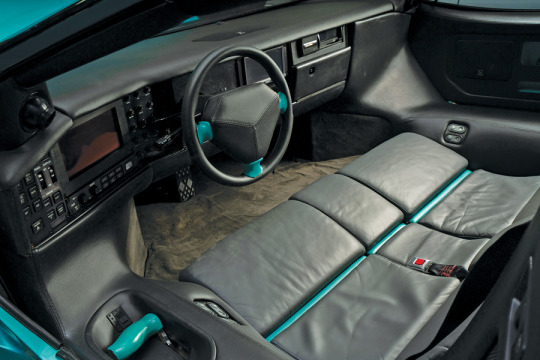
The car’s interior was also very similar to that of the W8’s, featuring a screen as opposed to analog gauges. The car also featured the same Sony CDX-A2001 ten-disc CD changer gracing the right side of the cockpit as the W8, as well as the same 3-speed Turbo-HydraMatic 425 automatic transmission mated to that beast of an engine; the transmission also had the same fighter aircraft throttle-like device. Vector employees had stated that while the prototypes used the three-across seating arrangement found on certain W8s, it would be more likely that the production WX-3 would use two bucket seats.

The car also featured the same scissor door setup as the W8.

Rear visibility on the WX-3 still wasn’t too great, although it was a marked improvement over the practically non-existent rear visibility of the W8. The rear of the car looks a lot more subdued compared to the front. As usual, it appears the location of the license plate holder was likely an afterthought.

The WX-3 also incorporates what I guess could be considered a very early version of active aero systems, featuring two movable flaps which lifted up when the car was braking, acting as an airbrake.

The WX-3 was first shown off at the 1992 Geneva Motor Show, although at first, strictly a design study, sans engine. The car was originally painted silver. After the car returned from Geneva, a related car joined it: the WX-3R.

The WX-3R was essentially the roadster version of the WX-3, with both sharing mechanical components and similar styling. However, the WX-3R featured dual bucket seats as opposed to the three-abreast seating of the WX-3 and was painted purple.

The WX-3 and WX-3R were then both displayed at the 1993 Geneva Motor Show, with the WX-3 having been repainted into aquamarine; this was done to promote another of Wiegert’s companies, Aquajet, a manufacturer of personal watercrafts, as the Aquajet logo featured aquamarine and purple as its primary colors. In fact, both the WX-3 and WX-3R appeared on the Aquajet website; however it appears the website is currently broken and will require an archival tool such as the Wayback Machine to access.
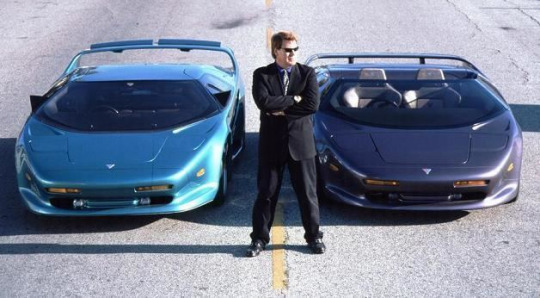
The WX-3 was intended to be put into production in 1993; however, problems began to surface.

In 1993, as Wiegert was preparing for production of the WX-3, a rather shady Indonesian company with Bermudan ties named MegaTech forced a hostile takeover of Vector Aeromotive; this ultimately led to the firing of Wiegert from his own company. MegaTech then attempted to produce the WX-3, but Wiegert sued the company and copyrighted his own design, so MegaTech could not produce the WX-3. Ironically, this would also spell the end of the WX-3; only two were produced.

Wiegert eventually regained control of the company and has been working on a new car known as the WX-8 for numerous years now; in fact, it’s been so long we may as well call it developmental hell. The WX-3 and WX-3R also came back under Wiegert’s ownership. However, in order to fund development of the WX-8, Wiegert decided to auction off both the WX-3 and WX-3R at a Sotheby’s auction in 2019; both cars were ultimately auctioned off in mid-January 2019, with the WX-3 fetching $617,500 and the WX-3R fetching $500,000. Both are now in the hands of private collectors.

Prior to the auction, the WX-3 appeared in an episode of the Burke’s Law reboot and was also spotted at various car shows.
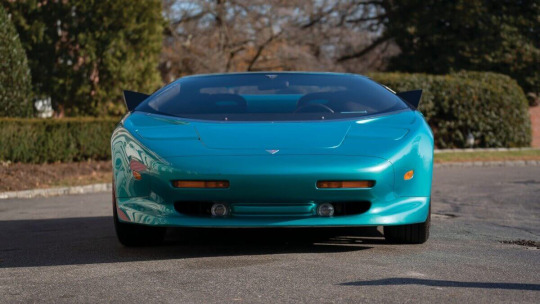
Okay, now that we’ve gotten all that out of the way, let’s get to the reason why you’re here.

This… is the Hot Wheels version of the Vector WX-3. Named the Vector “Avtech” WX-3 in the Hot Wheels lineup, this casting was first introduced in 1993 as a Vector employee exclusive, as shown above; the car was painted in the silver color that was originally on the actual car. Only 500 of this version was produced. This casting, like many other castings designed throughout the ‘80s and ‘90s, was designed by Larry Wood.

A more common version, painted in the purple as seen on the real WX-3R, was released the same year. A version exists of the purple version with normal 5SP wheels.
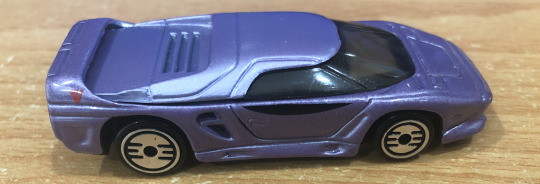
The WX-3 has a plastic roof which is riveted onto the rear. No back window is present. This casting features notably very few tampos, apart from the Vector logo on the wing and the black semicircle on the door intended to represent the lower window. The side vents are noticeable open and one can peer through them.

For the record, there isn’t very much going on in the rear of this casting either. Just the rear mesh grill, taillamps and triangular exhaust pipes.

The WX-3 has one of the least releases of any supercar or hypercar concept made by Hot Wheels around this period, with only five known releases. The casting was retooled slightly in 1997, with the prominent side vents closed off. This would ironically be the casting’s last release to date, in the Super Show Cars 5-Pack in 1997 (a version exists with open side vents, shown below), alongside the Dodge Viper RT/10, Jaguar XJ220, Avus quattro and Zender Fact 4. A few other combinations of the 5-Pack exist but this is the only one containing the Vector.

As mentioned above, this casting has not been seen since 1997; it has not been featured in any edition of the Final Run Series, but is assumed to have been retired since the casting has not appeared in the mainline for over 20 years and is unlikely to return.

I hope this long writeup has given you a better idea on this turbocharged thrasher, and what is quite possibly my new favorite supercar from the ‘90s; step aside, Ferrari F50. As usual, I’d do something like this any day.
This article is the second in a three-part series I will call The Vector Saga. The series will document the W8, the WX-3, and the history of Vector Motors as a whole.
#hotwheels#CastingCall#vectorwx3#vectoravtechwx3#avtechwx3#larrywood#ThatTimeForgot#vectoraeromotive#thevectorsaga
3 notes
·
View notes
Text
HTTP response status codes indicate if a particular HTTP request was successfully finished
HTTP reaction standing codes suggest no matter whether or not a precise HTTP ask for has long been productively done. Responses are grouped in 5 courses:
From the function you obtain a response that just isn't During this checklist, it's a non-standard response, probably personalized into the host's application.
Information responses
100 ContinueThis interim reaction suggests that every thing is Okay and the client must go on the request, or dismiss the solution In case the petition is presently completed. 101 Switching ProtocolThis code is sent in reaction to a Upgrade request header from the purchaser, and signifies the protocol the server is switching to. 103 Historical HintsThis standing code is mainly supposed to get used applying the hyperlink header, letting the purchaser agent start out preloading assets when the server prepares an answer.
Successful responses
200 OKThe request has succeeded. The significance in the accomplishment is contingent on the HTTP approach:
GET: The supply was fetched and it is despatched during the information entire body.
Place or Write-up: The resource describing the result from the action is despatched into the concept system.
201 Produced The ask for has succeeded and also a new source was made Consequently. This is certainly usually the response despatched after Publish requests, or any PUT requests. 202 AcceptedThe petition continues to be received although not yet acted on. It really is noncommittal, due to the fact there's Certainly not any way in HTTP to Later on deliver an asynchronous reaction suggesting the consequence from the request. It's intended for cases where a special course of action or host handles the request, or for batch processing. 203 Non-Authoritative Info This reply code signifies the returned meta-data isn't accurately the same as is out there with the supply server, but is collected from the regional or even a third-occasion backup. This is certainly generally useful for mirrors or backups of another useful resource. Aside from that unique circumstance, the"200 OK" reaction is desired to this status. 204 No Contentthere is completely not any material to ship for this petition, although the headers may perhaps be practical. The person-agent may well update its cached headers for this useful resource While using the new ones. 205 Reset ContentTells the consumer-agent to reset the doc which sent this petition. 206 Partial ContentThis response code is employed although the Range header is sent by the shopper to request only Portion of a resource. 208 Already Reported (WebDAV)Utilized inside of a remedy component to keep away from regularly enumerating the internal members of several bindings to the exact same collection. 226 IM Used (HTTP Delta encoding)The server has fulfilled a GET ask for to the resource, as well as the solution is often a representation on the consequence of additional occasion-manipulations applied to the current occasion.
youtube
Redirection messages
300 Multiple Option The petition has above 1 attainable response. The user-agent or client has to pick between these. (There is certainly no standardized way of deciding upon one among the answers, but HTML links to the prospects are advised so the consumer can select.) The brand new URL is presented inside the reaction. 302 FoundThis response code suggests that the URI of requested resource was modified briefly. Additional variations within the URI may well be gained Later on. So, this identical URI ought to be used with the customer in potential requests. 303 See OtherThe waiter despatched this response to manual the consumer to acquire the requested supply at Yet another URI with a GET ask for. 304 Not ModifiedThis is used for caching features. It tells the consumer that the reaction has not nevertheless been modified, Therefore the consumer can proceed to implement a similar cached version of this response. 305 Use Proxy Outlined in a very previous Model from the HTTP specification to reveal a asked for response needs to be retrieved by suggests of the proxy. It can be been deprecated because of security concerns pertaining to in-band configuration of the proxy. 306 unusedThis reply code is not any much more utilized; it truly is just reserved. It was used in a prior version of the HTTP/1.one specification. 307 Temporary RedirectThe server sends this reaction to immediate the consumer to get the requested source at a special URI with exact same strategy which was applied in the earlier petition. This has the identical semantics given that the 302 Located HTTP answer code, with the exception that the consumer agent shouldn't change the HTTP system utilized: When a Article was utilised in the 1st request, a Put up will have to be utilized in the second request. 308 Permanent RedirectThis usually means the useful resource is now permanently Situated at A different URI, presented from the Locale: HTTP Reaction header. This has the same semantics given that the 301 Moved Permanently HTTP response code, While using the exception the consumer consultant have to not improve the HTTP system employed: When a Submit was utilized in the Preliminary petition, a Submit should be applied while in the up coming ask for.

Client mistake answers
400 Bad RequestThe server couldn't realize the ask for due to invalid syntax. That may be, the customer need to authenticate by itself to get the requested answer. The Preliminary goal for producing this code has been working with it for electronic payment solutions, but this status code is often used really infrequently and no conventional Conference exists. 403 ForbiddenThe client doesn't have entry rights to this substance; that is, it can be unauthorized, so the server is refusing to deliver the requested useful resource. Compared with 401, the consumer's identification is known to the host. 404 Not FoundThe device cannot locate the requested source. In the browser, this normally usually means the URL is not regarded. In an API, this can also reveal that the endpoint is genuine nevertheless the useful resource alone isn't going to exist. Servers may also ship this response as an alternative to 403 to conceal the event of the supply from an unauthorized consumer. This reaction code is almost certainly by far the most famed one as a consequence of the frequent event online. 405 Method Not AllowedThe petition method is regarded by the server but has been disabled and can't be employed. By the use of occasion, an API may possibly forbid DELETE-ing a useful resource. The two mandatory procedures, GET and HEAD, need to never ever be disabled and should not return this error code. 406 Not AcceptableThis solution http://discorddownn.moonfruit.com/?preview=Y is sent when the server, right after accomplishing server-driven content negotiation, won't uncover any material which adheres on the criteria supplied from the consumer consultant. 407 Proxy Authentication RequiredThis resembles 401 but authentication is essential for being performed by a proxy. 408 Request TimeoutThis reaction is shipped on an idle connection by a few servers, even without prior ask for from the shopper. It commonly implies the server would like to close this down new link. This response may be utilized noticeably more since some browsers, like Chrome, Firefox 27+, or IE9, make the most of HTTP pre-link mechanisms to quicken browsing. Also Be aware that many servers simply shut down the connection with out sending this information. 409 ConflictThis reaction is sent any time a ask for conflicts While using the current state of the server. 410 GoneThis reaction is delivered once the requested information has become forever deleted from server, with out a forwarding address. Consumers are predicted to clear away their caches and hyperlinks on the useful resource. The HTTP specification ideas this position code to be used for"minimal-time, promotional expert services". APIs shouldn't feel pressured to indicate sources that are deleted with this standing code. 411 Length RequiredServer turned down the ask for since the Material-Length header industry just isn't outlined as well as the server needs it. 412 Precondition FailedThe consumer has indicated preconditions in its own headers that the server doesn't satisfy. 413 Payload Too Big Ask for entity is greater than limitations defined by host; the server may well shut the website link or return the Retry-After header area. 414 URI Too LongThe URI requested through the purchaser is longer compared to the server is ready to interpret. 415 Unsupported Media TypeThe media format of the info which is asked for just isn't supported with the host, Therefore the server is rejecting the petition. 416 Range Not SatisfiableThe variety specified by the Assortment header industry in the ask for can't be fulfilled; it is achievable which the scope is outdoors the scale of this concentrate on URI's facts. 417 Expectation FailedThis reaction code signifies the expectation indicated from the Foresee ask for header industry cannot be fulfilled by the host. 418 I'm a teapotThe server refuses the try to brew coffee using a teapot. 421 Misdirected RequestThe ask for was directed in a server which will not be capable to generate a reaction. This might be transmitted by a server that is not configured to develop responses with the combo of scheme and authority that are included in the ask for URI. 422 Unprocessable Entity (WebDAV)The petition was perfectly-fashioned but was not able to get followed because of semantic errors. 423 Locked (WebDAV)The source that has become obtained is locked. 424 Failed Dependency (WebDAV)The request failed on account of failure of a preceding request. 425 Too Early Suggests which the host is unwilling to threat processing a petition that might be replayed. 426 Upgrade RequiredThe server is not going to do the request with the current protocol but might be ready to take action subsequent the client upgrades to One more protocol. The server sends an Update header at a 426 reaction to suggest the obligatory protocol(s). 428 Precondition RequiredThe supply server demands the petition to turn out to be conditional. This response is intended to safeguard against the'shed update' issue, the place a client gets a useful resource's point out, modifies it, and Places back again to the server, when a third party has altered the state within the server, leading to a battle. 429 Too Many RequestsThe person has delivered too many requests in the precise sum of your time ("amount restricting"). 431 Request Header Fields Too Big The server is unwilling to course of action the ask for simply because its header fields are excessively massive. The request may be resubmitted right after lessening the dimension from the request header fields. 451 Unavailable For Legal ReasonsThe person-agent requested a resource which often can't lawfully be furnished, including an internet site censored by a federal government.
Server error responses
500 Internal Server ErrorThe server has encountered a situation it isn't going to learn how to tackle. 501 Not ImplementedThe petition technique isn't supported with the server and are unable to be handled. The one procedures that servers are required to persuade (and as a result that should not return this code) are GET and HEAD. 502 Bad GatewayThis mistake reaction means that the server, when employed as a gateway to have a reaction necessary to manage the ask for, obtained an invalid reaction. 503 Service UnavailableThe machine is just not ready to contend with the request. Regular leads to really are a host that is definitely down for routine maintenance or that is certainly overloaded. Notice that with this response, a person-welcoming web site detailing the problem must be despatched. This solutions should really be useful for short-term disorders in conjunction with also the Retry-Right after: HTTP header must, if at all possible, include the approximated time previous to the recovery of this service. The webmaster need to also acquire care about the caching-related headers that are sent collectively with this particular response, since these short term condition answers ought to ordinarily not be cached. 504 Gateway TimeoutThis error response is provided when the device is performing as a gateway and are unable to obtain a response in time. 505 HTTP Version Not SupportedThe HTTP Variation used in the petition is not really supported with the host. 508 Loop Detected (WebDAV)The server detected an infinite loop whilst processing the ask for. 510 Not ExtendedAdded extensions to the ask for are demanded to the waiter to match it.
1 note
·
View note
Text
Mono? Stereo? Both?
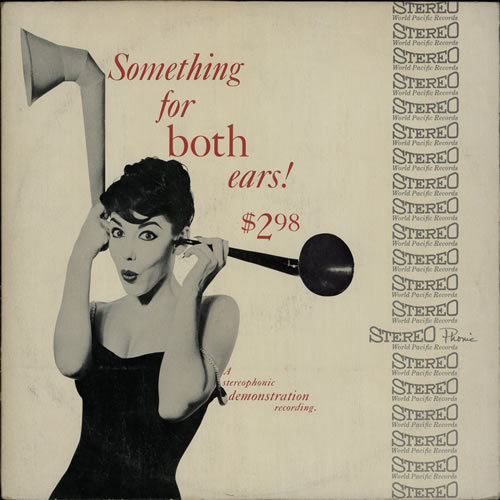
Admit it. You’re flummoxed, fried out and forlorn. And it’s not because your baby left you. No, it’s because you woke up one day and realized you’re a record collector. With a serious problem. And not just the physical kind. It’s true that record collectors suffer from a host of very real problems – lack of social graces from dealing with heavy-handed and judgmental record clerks, bad breath from breathing in mold spores wafting up from water damaged records, plumbers butt, and a scoliosis-like malady called “crate-diggers hump” (not as sexy as it sounds) acquired from years of slouching, sagging and stooping over anything and anyone just to fat-finger a copy of that one record that makes your heart flutter, your spleen ache and your bowels tremble.
No, your current dilemma is a horse of a different color. Which version of your favorite records sound best? The mono or stereo copy? Which one should you buy? Should you buy both? Neither? Your mind is melting.
These days there’s something akin to “Mono Mania” going on in the world of record collecting. To many of us it’s quite welcome. Especially if we’re one of the poor bastards not old enough to have purchased The Kinks Are The Village Green Preservation Society in mono when it came out and we don’t have enough cold, hard cash to buy a minty fresh original flip-back gatefold copy for $425. To us, a sealed mono reissue is just what the doctor ordered.
To others, this mono vs. stereo issue is as baffling as watching your grandmother cut chewing gum out of her dog’s hair. What’s with all these monophonic reissues? To a cynic it seems like it’s the well-orchestrated and profitable reissue of every single recording ever made in a unique mono mix. You’ve seen them poking out of record bins everywhere. They’re typically pressed on 180g vinyl, tucked gently into nice inner sleeves hidden within tip-on covers and created lovingly and painstakingly (note: these are words that usually mean “expensive”) using “the original mono mixes.” But are they better? Sometimes. Sometimes not. Sometimes they’re just different.

This next bit of quasi-intellectual, ponderous gibberish is purely subjective. More so than everything up to this point in this pointless essay. Back in the mid-1960s there were primarily three reasons for buying a mono recording when a stereo recording was also available: you had a hi-fi system with only one speaker (more common that you think), you were deaf in one ear like Brian Wilson of the Beach Boys (look it up) or you were a cheapskate (mono records cost about $1 less per album). Sometimes you were all three. Sad.
Why jump back to the mid-60s? Because that’s a period of time when record buyers had a real choice to make. In most cases you could amble into any record store in the world and buy a great sounding, thick pressing of your favorite record in mono or stereo. Sometimes fake stereo. More on that later. Before the mid-60s, stereo records were a bit of a crap-shoot if you were into rock, blues or jazz. They might sound goofy. With instruments and vocals haphazardly panned left or right. It took a while for engineers to figure out how to make the most of stereo, and at the same time artists were figuring out how they wanted their music to sound.
Classical music is a bit of an exception to this. Conventional wisdom is that stereo recordings of classical music tend to sound better earlier on. And as far as jazz goes, producers and engineers like Rudy Van Gelder, Orrin Keepnews, Creed Taylor and Teo Macero were also a bit of an exception. They got into stereo early on and figured out how to make stereo sound cool with very few microphones. You can read on and on about this (and should) from many sources that are far more expert on this topic than your lazy, stoop-shouldered author.
Speaking of jazz, the jazzbos tend believe that mono is best no matter what. Original 1950s and early 60s pressings of anything on Blue Note, Prestige, Riverside, Impulse and Columbia are more valuable. And it’s true that these mono records often do sound best. To my ears they can sound louder, with clearer sounding instrumentation and, in the very best cases, the sound can seem to pounce out of the speakers. But how much better are they? I used to avoid stereo pressings of jazz records from the mid-60s and earlier. I was under the impression they were “fake stereo” created in dimly lit back rooms in order to jump on the stereo bandwagon. Some are. Some aren’t.
Let’s push on.
Stereo vs. mono. Which is best? It depends on the recording, the vinyl pressing and your personal taste. Sure, there are albums that everyone says are amazing in mono – the pre-1967 records by The Beatles, The Kinks, The Rolling Stones, The Pretty Things, etc. The list goes on and on. But there are recordings that sound more eventful and interesting in stereo (Interstellar Overdrive by Pink Floyd comes to mind). Rock records released between 1967 and 1970 tend to be the ones that are far more subjective. And you’ll find plenty of beard-scratching know-it-alls with strident opinions who’ll tell you what to think. Some of these guys are right. But many of them also live in their divorced mom’s basement and only emerge from their listening lair to attend a record fair or to run out to buy mom a carton of Benson & Hedges cigarettes. Occasionally, they come upstairs to rub their mother’s bunions.
People tend to crave the mono releases in part because they’re so rare. I know I’ve got my faves. I prefer the mono pressing of Sgt. Pepper’s Lonely Hearts Club Band by The Beatles because (to me) it sounds more like a rock band and less like studio frippery. But the songs themselves are not that different. It’s not like hearing the record in mono for the first time could convince you that the stereo record you’ve been listening to your whole life sounds like a Jim Nabors Christmas album. Sometimes the performances are different or mixed peculiarly (the mono mixes of Don’t Pass Me By and Helter Skelter from the Beatles White Album come to mind).
For the purposes of this stupefyingly silly essay, I went back and did some side-by-side listening tests to confirm all my preconceived notions of what I like and don’t like in some hallmark recordings yanked from the overloaded racks in my fantastically disorganized music room. Stereo vs. mono. Which is it?




The Who Sell Out (US mono reissue vs. Japanese stereo reissue):
From memory I thought I preferred the stereo pressing of this. Armenia City In The Sky is a fave of mine and I thought stereo was the only way to hear this tune. Wrong. Not by a crazy wide margin in my case but wrong still. The mono pressing sounded heavier and punchier yet still retained the fun frippery of the studio trickery baked into the tapes on this record. Mono wins.
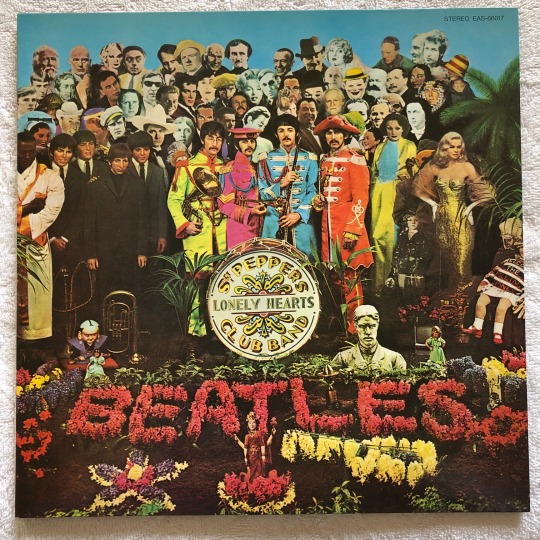
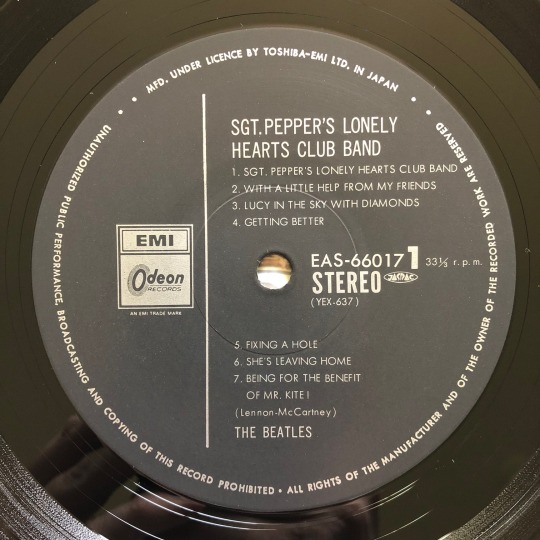


The Beatles “Sgt. Pepper’s Lonely Hearts Club Band” (Japanese stereo reissue vs. UK mono reissue):
I already tipped my hand on this one. As a kid I only heard the stereo copy. Loved it. No issues whatsoever. But, ever since hearing the mono copy of this record in college (several semesters ago) I became a monomaniac. Fact is, this might be the very first record where I became convinced of the majesty of mono. Mono wins.
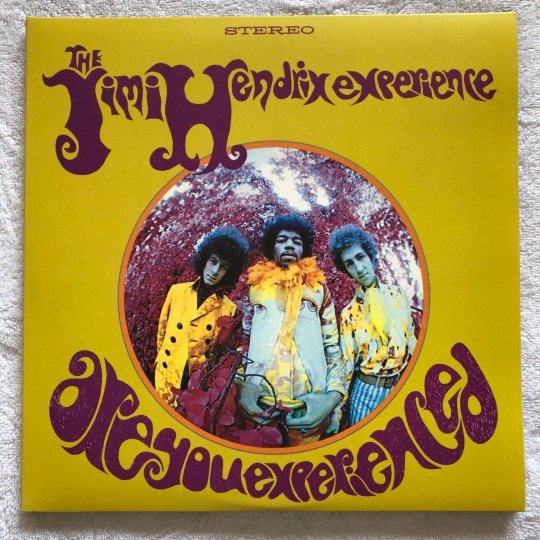



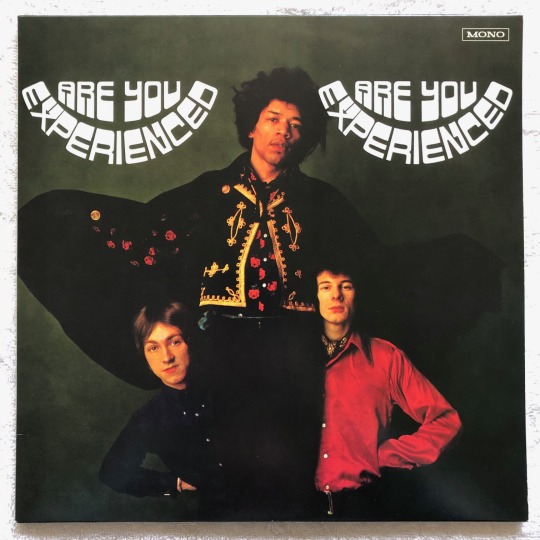
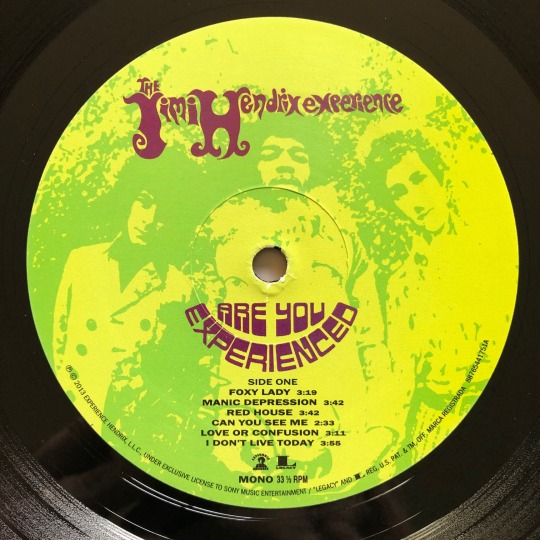
The Jimi Hendrix Experience “Are You Experienced” (Reissues of US stereo, US mono and British mono pressings):
Ok, read anything about this record and the experts will tell you the British mono pressing is the only one worthy of a spin on your turntable. I don’t own an original mono pressing. Who’s got that kind of dough or good fortune? I DO own a mono British reissue. A US mono reissue. A few stereo copies including a stereo reissue (the double LP Hendrix Family version) I used for this test for a couple reasons (it’s readily available at record stores and my copy was also readily available). To my ears the stereo copy is the clearest, coolest sounding and has effective panning and the sort of soundstage tomfoolery that makes stereo fun. To me it’s the best-est. Stereo wins.

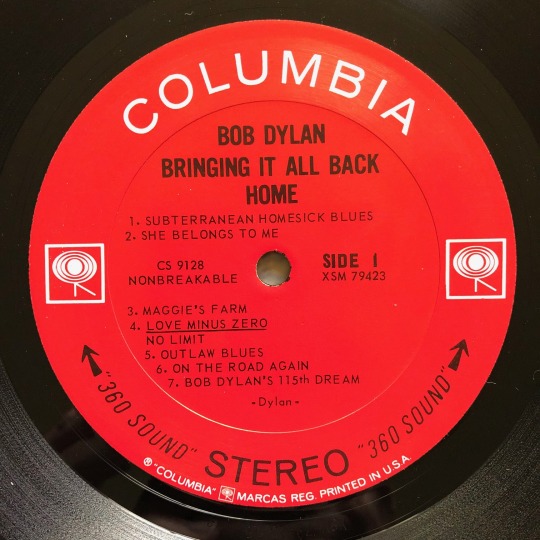


Bob Dylan “Bringing It All Back Home” (US stereo original vs. US mono original):
Here’s another one that the professional listeners with hyper-tuned ears say should ONLY be heard in mono. I remembered liking the mono best years ago. Then I listened today. I compared a mono original to a stereo original. The mono copy was snagged by me only a couple years ago. It had been (mis)priced by someone at a national used bookstore chain. The price was too good to turn down and the record is so clean I sold my mono reissue. The stereo copy I got from my wife’s uncle who owned about 300 records. 290 of those were Irish music except for a few Greenwich Village favorites like Dylan, Baez, Seeger et.al. Despite being a well-loved copy with plenty of tiny hairline scratches and marks, I prefer the stereo copy. To my ears it’s the opposite of what I said about The Who Sell Out. In this case, I thought the stereo had more punch. Stereo wins.

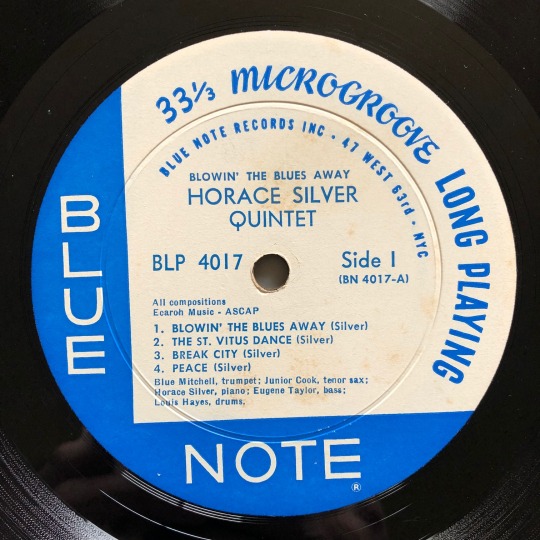


Horace Silver “Blowin’ The Blues Away” (US mono original vs. US stereo reissue):
Ok, one of these is a pricey collectible and the other isn’t. Bet you can guess which is which. I fully expected the expensive mono original pressing to blow away the 70s “black b” pressing. And it is better. Louder. Hotter sounding instruments. In some cases Blue Mitchell’s trumpet is positively piercing. Right up into the red in the mix (God bless Rudy Van Gelder). Same way with Junior Cook’s sax. But, the stereo reissue from the 70s is not bad at all. Nice and punchy. It’s a real stereo recording too. Nothing fake about it. Rudy Van Gelder recorded this session in stereo and mono in 1959 and he’s one of the few cats who knew what he was doing in the late 50s. Make no mistake, the mono is better. But if I found these two records cozied up together in a bin at my local record shop and the mono OG was $150 and the stereo reissue was $10 I’d buy the stereo copy in a heartbeat and spend the rest of the money on elocution lessons so I could sound smarter. Mono wins.
Note: I’ve found that most of these “black b” Blue Notes sound pretty good. I also love corduroy and canned beer so take that with a grain of salt.
Bottom line? It turns out the ears are the best test. Do YOU like how the record sounds? That’s what matters most. I prefer some mono records and some stereo pressings. I’ve even dabbled in fake stereo from time to time. I happen to love some records that have been “electronically re-recorded to simulate stereo.” After all, in many ways, life is a simulation. I can’t say I love tons of fake stereo records but I do love a few. In fact there are a few country music titles that fall into this sadly maligned category that I hold dear to my heart.
Here’s the insidious thing. Record collectors often have mono and stereo copies of their favorites. Sometimes the really sick bastards have multiple copies of pressings from all over the world. These people should be celebrated or pilloried. I’m not sure which. Perhaps a little bit of both?
Records. In the end I feel like we’re living and breathing in the promises and perils of records at the same time. Plumbing the depths of the dollar bin and scaling the heights of a pricey wall of record store collectibles. Sometimes on one dirty, dimly lit Saturday afternoon. And I loathe hyperbole. Sort of.
Mono. Stereo. Both. Indeed.
#vinyl#records#mono#stereo#beatles#thewho#jimihendrix#bobdylan#horacesilver#bluenote#bluenoterecords#deepgroove#rudyvangelder#orrinkeepnews#teomacero#impulserecords#parlophone#trackrecords#emirecords#polydor#columbiarecords#recordstores
5 notes
·
View notes
Text
The Only One Ever Made: The Plymouth Road Runner Rapid Transit
This is the 1971 Plymouth Road Runner Rapid Transit, it’s the only one ever made and today it stands as a high watermark for American concept muscle cars of the early 1970s.
The Road Runner was developed alongside three others – a 440 Cuda, a 340 Duster, and a Hemi Cuda that was built as a replica of Don “The Snake” Prudhomme’s drag racing car. Rather than being standard motor show concept cars, they had been created specifically to be a part of a travelling show called the 1971 Rapid Transit System Caravan.
There had been a 1970 version that had proven to be hugely popular, and so it was turned up a notch for 1971. The cars were all transported by a 1955 tractor-trailer which had been painted yellow and carried the Rapid Transit System and “Plymouth Makes It” logos emblazoned down both sides.
The Plymouth Rapid Transit System
The Rapid Transit System offered performance parts, decals, and how-to guides for Plymouth owners to assist them in making their cars as quick as possible. Performance parts included hot cams, performance headers, carburettors, special wheels, and a range of other parts.
Information packs were available to teach Plymouth owners how to tune, modify, and set up their cars for the best straight line speed and cornering ability. It’s difficult to imagine the legal ramifications of automakers offering upgrades like this nowadays for owners to install themselves at home, but the 1970s was a far less regulated environment (for better or worse).
The Plymouth Rapid Transit System Caravan
The 1971 RTS Caravan included the car shown here, a bespoke custom Plymouth Road Runner, as well as the aforementioned 440 Cuda, a 340 Duster, and Hemi Cuda drag replica. The Caravan also included a a 27 minute film showcasing the history of American drag racing, obviously with plenty of highlights of Plymouth’s racing accomplishments thrown in for good measure.
The Caravan also included two cut-away performance engines to show the internal workings, with information boards to explain the engines and their superior Plymouth engineering. A large display board of performance parts also toured with the Caravan, to show off the performance parts on offer.
In 1971 the RTS Caravan toured the country from coast to coast, making over 100 stops at dealerships, races, and car shows. It was a huge hit with attendees and led to the sale of countless Plymouths, just as the executives had hoped.
The 1971 Plymouth Road Runner Rapid Transit
The car you see here was widely considered to be the highlight of the 1971 show cars. It was built by Chuck Miller of Styline Custom for Chrysler in 1970 and it’s characterized by its one-off body modifications including a unique front end that extended the car by 6 inches, twin hood scoops, and a tail with an unusual integrated spoiler.
Quad headlights are situated behind a steel grille with integrated headlight covers, and there are 3D vacuum-formed translucent custom Road Runner heads on each corner of the car, which led to the nickname “The Chicken Head Car”.
Under the hood you’ll find a 383 cu. in. V8 with a dual-snorkel air cleaner backed by an automatic transmission. In Road Runner specification this V8 had a 4.25 inch bore, a 3.38 inch stroke, 335 hp at 5,200 rpm, 425 ft lbs of torque 3,400 rpm, a 9.5:1 compression ratio, and a Holley 4-barrel carburettor.
The styling of the Road Runner Rapid Transit including its fantastic new bodywork, unusual wheels, and its unique livery has ensured that it’d stayed a favourite with muscle car enthusiasts for decades. Now for the first time in recent memory the car is coming up for public sale with Mecum in mid-May.
If you’d like to read more about it or register to bid you can click here to visit the listing.
Images: David Newhardt courtesy of Mecum
The post The Only One Ever Made: The Plymouth Road Runner Rapid Transit appeared first on Silodrome.
source https://silodrome.com/plymouth-road-runner-rapid-transit/
79 notes
·
View notes
Text

Anyone visiting the Great War cemetery of Heilly in the valley of the Ancre is standing on the site of a casualty clearing station which was swamped with wounded troops evacuated from the Somme battlefield on July 1 1916. It is, like so many of these war grave sites, peaceful and melancholy. On the high spur between here and the Somme valley, glowers a prominent chimney rising above low buildings. This is the brickworks of St. Colette and on 21st April 1918, Baron Manfred von Richthofen was shot down into a nearby field and killed. His is dying word, heard by troops who ran across the field to the site of his crashed aircraft was “Kaput”

In the last photograph taken of Richthoven, he lies dead; his glazed eyes still open. Shortly before this death portrait was taken, he had been subjected to a crude field hospital autopsy, where the entry wound was connected to its exit with a length of fencing wire… The photograph is irregularly criss-crossed by crease lines formed by folding it into a pocket, betraying a certain disregard of its importance by the allied authorities.
Richthofen has been used as an exemplar of an archetype which probably never existed; the gallant knight of the air. Certainly he himself would not have recognised this idealisation. He always sought out prey operating less manouvrable, slower and inferior-armed craft. He carefully calculated the odds and only struck when they were heavily stacked in his favour. Which is why he enjoyed a relatively extended career as an ace.
His end was uncharacteristic of this self preserving and cautious predator. Hungry for another kill, he trailed novice Canadian pilot, Lt Wilfred May. Blind to impending danger, he was lured into trouble. The Sopwith Camel was not alone. He was being protected by Captain A. Roy Brown, a Canadian pilot. Brown latched onto the red tail and fired off his machine guns at the three-winged craft.The plane dropped into fields near Heilly and Brown became a national hero and convenient poster boy for the RAF; newly formed on April 1st. The man who shot down the Baron.

Except he didn’t. Richthofen’s low-level pursuit path down the Northern edge of the Somme valley had taken him over allied lines where Australians on the ground were manning Lewis machine guns mounted on posts to permit anti-aircraft activity. Employing post-mortem documentation and plotting the route of the plane over the several gun positions of the candidates offered up, Sergt. Cedric Basset Popkin, [24th Australian Machine Gun Company] is now generally credited with killing Manfred von Richthofen.[1]
Histories generally hold a particular brief and reshape inconvenient facts to relate a more palatable narrative. Knowing this now, I no longer feel so bad about the inaccuracy of my childhood war games, where I would ambush my Father’s Fokker DR1 with SE5a’s and part-completed models from the Second World War period.

Like many kids, assembling aircraft kits was my entreé into the field of military history. I would watch my father carefully glue sections together after painting the elements in accordance with the colour scheme instruction sheet. He would resist any exhortations to rush the process. Only when the decals were immersed in a dish of water to help them slide easily from their backing papers onto the plane’s surfaces could I see the end in sight and the plane roll out of its hangar..
Most of the planes themselves have now been lost across the intervening fifty-odd years. All that remains are some of the assembly sheets which came with the kits. What interested me as as a youngster was the variety of paint jobs each plane displayed. Depending on which manufacturer’s product one bought, even a plane as characteristic as Richthofen’s DR1 dreidekker displayed variations in colour scheme -because he had several different machines at his disposal within the JG1’Circus’. it is generally accepted now that the machine he flew on the 21st April [FOK Dr1 425/17] was indeed the all red livery -though the finish was apparently uneven as shortages forced the paint-shop to dilute the pigment down, giving an uneven, streaky coverage across both the fabric and metal cowling. [2]

Squeezed by regular work shifts and overtime, my father gave up his precious spare time to entertain his only kid and his friends. He would probably have preferred to have been playing local league cricket with his brother, or watching his football or rugby league team, but I was the lucky recipient of his indulgence. He always stoically accepted the inevitable endgame whatever activity we engaged in; predestined as it was by the series of rules rigged against him. My friends and I played him in table football fixtures where his every goal was ruled offside. We raced cars around a Scalextric track over which he was condemned to drive the slower car. He would play football in the park with us; either being urged to run around the park evading clumsy tackles or consigned to goalkeeping duties where he would be forced to re-enact every goal scored against him in choreographed ‘slow motion’.
A treat was to take the planes we made together to the park where, withstanding the ignominy of always being cast as an enemy flyer, he would be relentlessly pursued by a swarm of children aiming their not always historically accurate allied aircraft at him in a menacing fashion.
This is just one way in which I remember my father, but it is perhaps the most evocative. He died just a few weeks after I had moved to Wales in 2004 and almost immediately, I had the idea for a painting on this theme.
Over a period of several years, I made many sketches, playing with composition and viewpoint when I had spare time between other, more pressing painting projects. As time passed, It gradually became almost too important to me to tackle. I developed something of a block. I developed strategies to avoid commencing such a personal venture. I could see some firm image, yet I wouldn’t commit it to canvas. Only this spring, after I had cleared the studio deck of two projects inspired by the works of George Orwell and found no other imagery competing for my attention [and almost exactly one hundred and one years after the baron’s death], did I finally decide to cash in this long-standing cheque.
Of course this is not exactly how Richthofen died on the plains East of Amiens.

There is, in this first version anyway, no Australian infantry element and I deeply resent the erasure of their contribution here by early histories [as I do the gross mismanagement of their talents at Gallipoli]. However, it does record how the Baron met his fate several times across Manston Park and on our back garden lawn in East Leeds. When I read something new about Richthofen, I try everything to take myself back to the Great War period -and to this period alone, buttressed by our rich archive of stills photos and cinematography, but I do also still see our model aircraft and Dad’s plane in the cross-hairs of my mind. Still, don’t we all read history as a synthesis of known fact leavened with our own experiences, imaginings and interpretations?
I miss my Dad; barely a day goes by without my thinking of him. Even now.
[1] https://net.lib.byu.edu/~rdh7/wwi/comment/richt.htm
[2] http://www.fokkerdr1.com/
The Death of Richthofen Anyone visiting the Great War cemetery of Heilly in the valley of the Ancre is standing on the site of a casualty clearing station which was swamped with wounded troops evacuated from the Somme battlefield on July 1 1916.
#Airfix kits#Cedric Basset Popkin#Fokker Dr1#George Orwell#Heilly#Heilly CCS#Manfred von Richthofen#Manston Park Leeds#Red Baron#Revell kits
4 notes
·
View notes
Text
Cranberry & Pecan Scones
Scones are an early Scottish quick bread, in many ways resembling a sweeter version of a good Southern biscuit. Like biscuits, make these by hand in a bowl with a wooden spoon the old-fashioned way. Serve with clotted cream or sour cream and good preserves.
Ingredients:
2 cups all-purpose flour
1 tbsp baking powder
1/2 tsp baking soda
1 tsp salt
1/4 cup packed light brown sugar
8 tbsp (1 stick) very cold butter
1/2 cup dried sweetened cranberries
1/2 cup chopped pecans (about 3 oz)
1 egg, beaten
1/3 cup light cream, or half-and-half
Milk, for brushing
Granulated sugar, for sprinkling
Preheat the oven to 425 F (218 C).
Sift the flour, baking powder, and baking soda into a large bowl. Mix in the salt and brown sugar. Grate the butter onto the flour mixture using a cheese grater. Break the butter into smaller pieces evenly throughout the flour mixture using your hands, until the flour mixture resembles coarse meal.
Add the cranberries and pecans and mix until just combined. Make a well into the center of the flour mixture. Add the egg and cram to the well and mix quickly. Add a little more cream if necessary to bring the dough away from the side of the bowl.
Turn the dough out onto a floured surface and knead three or four times. Form the dough into two equal-size balls. Roll out each ball on the floured surface into a circle 1/2-inch thick. Cut the dough into wedges and place on a nonstick baking sheet 1/2-inch apart. Brush the tops of the wedges with milk and sprinkle on the granulated sugar.
Bake for 12 to 15 minutes. Makes 8 to 12 scones.
- from Holiday Fare: Favorite Williamsburg Recipes (Gonzales)
243 notes
·
View notes
Text

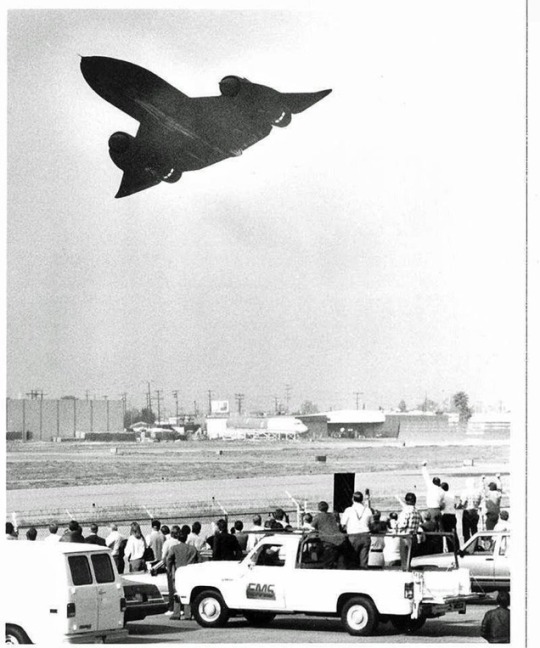

The SR-71 Was Close to Perfect
A member of the Blackbirds’ ground crew looks back on the airplane’s flight-test beginnings to the end of the Blackbirds
This first photograph was taken of the SR-71 #972 when it was in a hangar near Dullas airport, waiting for the new Smithsonian Air and Space Museum to be open. Photo Eric long. The other two photographs were taken at Palmdale California December 21, 1989.
After a 480-mile flight from Beale Air Force Base in California, the midnight-black airplane swooped down to about 300 feet above Burbank Tower, less than 30 seconds after its scheduled arrival time of 12 noon. It made an easy half-roll, then completed two more passes. The parking garage roof where I stood reverberated with cheers, but as the Blackbird came in for its final pass, a hundred feet off the runway, and then pulled up just beyond the tower, the crowd fell silent. was December 1989, and this flyby, a gift to Lockheed employees from Ben Rich, head of Advanced Development Projects (the Skunk Works), marked the beginning of the end of the SR-71. After much debate in Congress, the Blackbirds were about to be retired. The YF-12A, the earlier, single-seat version of the SR-71, first flew in August 1963 and the Blackbird in December 1964. It was still unsurpassed when it was retired in 1990, 24 years after it officially entered service.
As I watched the SR-71 that December day, I thought back to the airplane’s flight-test beginnings in the early 1960s. I thought of Ben Rich, Ray Passon, Keith Beswick, and so many others whose lives were forever touched by this aircraft. I too was part of the Blackbird team, setting up housing, transportation, and communications—special measures due to the secrecy necessary. And above all of us was designer Kelly Johnson, who had a gift for sharing his ability to innovate and his drive to succeed. The unity of commitment we felt under leadership from Larry Bohanan in engineering and Dorsey Kammerer in production reached new intensity whenever Kelly arrived in the field. Sometimes he would good-naturedly arm-wrestle with people working there. His team members were hand-picked and fiercely loyal to him. He once offered $50 to anybody who could find an easy job to do. He got no takers. When it came to their specialties, the people working on the Blackbird were the best in the company, perhaps in the country or even the world. The last word in reconnaissance airplanes, the SR-71 was capable of flying faster than Mach 3 and above 85,000 feet. In fact, the SR-71 flew so fast that even in the cold of those rarefied heights, the friction of the air heated its titanium skin to 550 degrees Fahrenheit.
On the day the Blackbird took to the air for the first time, many of the ground crews showed up. I had worked all night, but sleep in those days seemed like nothing but a waste of time so I stayed to watch. The weather was perfect for a December day: clear and cold, with snow on the surrounding mountains. Somewhere around 8 a.m. the desert silence was shattered by the sound of the twin Buick V-8 engines used for the starters. Later, when the Blackbirds operated at their base at Beale, they had permanent start facilities in their hangars, but in the early days two highly modified 425-cubic-inch Buick Wildcats, an estimated 500 horsepower each, were used to turn a massive starter shaft that was inverted into the first one, then the other of the SR-71’s J-58 engines. One sound I shall never forgot is that of those unmuffled Buicks holding steady at better than 6,000 rpm in excess of 15 seconds at a time, all hours of the day and night. Starting the engines was no easy job.
Kelly Johnson stood by in his familiar dark blue suit and tie, smiling as he had a final word for the pilots.
Veteran crew chief standing next to me could only murmur, “Her enemies will never be natural.”( that was true. It was jealous people that were her enemy.)
Written by Jim Norris
@Habubrats71 via Twitter


10 notes
·
View notes
Photo

OBSIDIAN WILL
We caught up with the members of Obsidian Will (OW: Liam, Lloyd, and Justin) to discuss successes, challenges, favourite tracks of their own, and their most influential records. Check them out at one of their upcoming shows and witness their artwork for yourself! (Photo: Natalie Jeffery)
VITALS
Facebook: www.facebook.com/obsidianwill
Web: www.obsidianwill.com
Instagram: www.instagram.com/owmelammu
Upcoming shows: May 25 - Drone Day, Ottawa, ON June 20 - L'Ordre de l'Infiniment Nada, Obsidian Will, Transmit vs. Intangerines, Bar Robo, Ottawa, ON.
SA: How did Obsidian Will first start playing music together? OW: OW started in 2013 in the office of the Carleton University archives and rare book room, where Liam used to work and Lloyd still does. We were both in other bands, Liam’s was ending as his band mates moved out of town, and Lloyd’s was still going but winding down. We discovered a mutual appreciation for classic heavy metal and various metal sub-genres: black metal, folk metal, witch house, etc. and both came across funeral doom while poking around bandcamp and itunes. It was also around this time that Lloyd started experimenting with making soundscapes on garageband and integrating lyrics. Liam also went to see Merdaratha, which incorporated pre-recorded ambient loop tracks that could be played over by a live band. Liam thought it would be cool to layer some guitar over the soundscapes Lloyd was making, and Lloyd could provide the rhythm. That’s sort of, but not quite, what we ended up doing.
We decided to jam together and booked some time at the rehearsal space under Irene’s called Noise Annoys. The room was great but the shortest amount of time you could book was four hours. Four. Hours. It ended up being a lot of time but allowed us to work for long periods and figure out what our version of funeral doom would be. Originally, all of our songs were between 12 and 20 minutes long. The tightened-up versions of the songs we wrote at this time - like Ghost Acres and Marked Hands - are still part of our sets and are notably slower tempo and sparse-sounding. Eventually, we would move away from trying to fit into the funeral doom genre.
We got lucky somehow and booked a few gigs as a duo, including opening for Topon Das, Greylights, Black Oak Decline and Empty Vessels. We also did our first out-of-town gig at a nudist colony in Vankleek Hill. After we had played our original set list a few times, we decided our sound was a bit too sparse and thought twice about always having a pre-recorded backing track to break-up the silence. Luckily, Lloyd met Justin in an esoteric/occult reading group he started. Their conversation quickly turned to music and Lloyd invited Justin to join with the band to play violin and be the “live loop track” that would replace the pre-recorded one. A few weeks after Justin came on board, we had our first gig with him. We didn’t really have time to prepare, so we just told him to improvise as we played through our set list. Justin eventually purchased an electric violin and now an electric cello, and is integrated more fully into the songs and overall sound of Obsidian Will.
SA: What bands or musicians would you cite as the biggest influences on your sound? OW: At the beginning it was certainly Doom bands like Skepticism and Nortt, as well as folk metal bands like Wardruna. Merdaratha was a huge initial local influence as well, as was Gates from Toronto. We are individually and collectively influenced by many different bands and styles of music and sound art, and as we have continued to work together more of our influences outside of the metal genre have crept in like The Mars Volta, Laibach, Lustmord, and many of the artists on the Cryo Chamber label.
SA: Thus far in your career, what has been the band’s biggest success? OW: It’s all a success. Every time we get to play a show is an extreme privilege and it’s wild to us that we get to share the stage with some of the most exciting bands we know. It’s still a total novelty that we can contact bands that we like, or, even crazier, get contacted by rad bands out of nowhere, and have them agree to/want to play a show with us.
Picking out a few specific examples though, doing an Ottawa-Montreal show swap with Le Pélican Noir is a definite highlight. We are super glad to have met Sylvain and Maxime and are excited to collaborate with them in the future. Being asked to play the Ottawa Experimental Music 5 year anniversary show is also huge for us, and it’s kind of unbelievable that we got to be on the same bill as amazing local bands we admire like Novusolis, Clavius, Deathsticks, RAAS, and Forgotten in the Woods Again. Also, having an album and EP recorded by Topon Das at Apartment 2 Studios is like a dream come true, and, thanks to his production skills, having them turn out wayyy better than we thought possible was an added bonus.
SA: Conversely, what is the biggest challenge you have faced, and how have you dealt with it? OW: Obsidian Will doesn’t really fit into any one genre, or at least one of the genres you can pick from a scroll-down list on bandcamp/soundcloud/spotify etc. Our sets can range from quiet drone/ambient to a crushing doom-infused wall of noise. A blend of those two extremes isn’t always an easy sell. This might make us a bit more challenging to put on a bill, because we’re not really a fun high-energy band that would get booked for your usual bar or festival gigs - we have a tendency to bring the mood down. That said, we’ve managed to find a core group of local bands and artists we are similar to and that we work well with. We are still working to build our audience and find other artists to collaborate with. Having the ability to disseminate our music online helps when your project is more niche, like ours.
SA: How do you guys approach the song-writing process? OW: We’re still working on figuring this one out. Our older approach, when we were a two-piece of drums and guitar was to kind of work independently and rely on visual cues from on-another, mostly nods and looks. Essentially, it was the law of the jungle, but we made it work.
Once Justin joined the band, and now that Lloyd is incorporating synth, we realized we would need to work on coordinating. Right now, we’re working on a new song that will require a lot more structure and coordination between the three of us. We’re currently building a structure based on a few variations on the central theme.
Usually one of us has a concept or an idea we want to explore with the band. We sit and talk about it and then see if we can translate that narrative into sound. Occasionally we will also bring a riff or soundscape forward and work with that.
Also, we usually write lyrics first and try to build a song structure around them, or, for less structured and more ambient songs, pre-record the lyrics and play them over what we’re playing. For these less-structured songs, we end up doing our own thing to a great extent, recording it off the floor, and listening back to it to make sure everything we’re doing fits together. The tricky part is remembering what you were playing!
SA: What are your thoughts on the Ottawa music scene? OW: There are positives and negatives. We recognize that we are a niche project and our music/performances don’t appeal to everyone; that’s totally fine. As a result of this, though, we had a hard time finding shows at first and are still working on building a local audience. Maybe this is commonplace and not exclusively an Ottawa thing, but it seems like crowds tends to follow specific promoters, and promoters tend to focus on specific genres, which totally makes sense. This can just make it a bit difficult to do something different and still play locally. That’s probably more on us than on “the scene” though.
That said, we’ve been super lucky to get support from other bands and locals. One of our earliest supporters was Topon Das. Not only did he record, mix, and master our self-titled album and the Night Sky EP at Apartment 2 Studios, he headlined our first show and also got us on early bills with bands we were amazed to play with like Black Oak Decline and Empty Vessels. We are super appreciative of all the help he’s given us and feel privileged that he’s been involved in the band’s development.
Another huge help to us is Adriana Ciccone (AKA Baba Ganoush). Finding the Ottawa Experimental Music facebook page was extremely helpful for promotion and finding shows. Adriana has been very supportive of OW, plus she’s a super talented musician herself that is contributing a lot to the Ottawa music scene as a performer, community radio host, writer, organizer, and show promoter. We consider her a very positive force in the Ottawa music scene and are extremely grateful to have met her and to have shared a stage with her. Check out all her stuff if you haven’t already! Forgotten in the Woods Again, Constellation 425, Ottawa Experimental Music, Hexon Bogon on CKCU. She does so much that is no doubt an incomplete list.
Ottawa Drone Day has also been a big help as well (full disclosure: Liam has helped organize Drone Day for the past 3 years). It’s always encouraging to see that there are so many local performers doing very different styles of music than you would normally see at shows, and it is great to be a part of that. Overall, though our niche is specific we are very encouraged that we’ve been able to find local bands to play on the same bill with and that like our music, and likewise, we like theirs.
SA: From Tamtu in November 2016, all the way to Night Sky, in November 2018, what kind of progression has there been in your music? Or, has it rather stayed constant over time, in terms of theme and expression? OW: Over time, we have played with the idea of structuring our shows and recordings as ritual spaces. As the ones creating the experience, we are guides bringing the listener on a sonic journey. We have structured our sets and albums to do this, trying to be conscious of what’s being communicated overall and being sure to open and close the ritual space of the performance before and after. This idea developed early on and has been a through-line throughout our performances and recordings... most of the time.
Similarly, we consider our songs, with and without lyrics, as meditations. We are often trying to explore things that inspire awe through their ineffability or by the contradictions they embody. Sometimes we borrow from classical mythology to do this, like in The Mother of Eleven and Marked Hands, and sometimes we look to the present like in Teratogenesis or Salvage. We are often writing songs about forces beyond our control and the feeling of powerlessness.
As far as recordings go, we’ve alternated between more structured songs and more improvised, noisy, and experimental “songs” (calling them songs would be kind of a stretch). Tamtu, Hollow Witch, and Night Sky are all less structured experimental pieces we recorded for Noisevember. For these, we try to tell a story through sound and sometimes incorporate pre-recorded lyrics. For Hollow Witch, we stayed at a friend’s house deep in Lanark County and recorded the songs in various parts of the house as well as one outside. We ritualized the session overall as well as each recording, and in the end, the album ended up being an ode to the house itself. Our self-titled album and Melammu are recordings of some of our more structured songs and is a bit less consciously organized overall. The elements are still there, but the songs are more able to stand alone.
Also, in the time we’ve been playing together we’ve all grown as musicians. We’ve also grown in terms of gear. We started with drums and electric guitar and now we have drums, baritone guitar, electric violin, electric cello, 3 or 4 synthesizers, and collectively we probably have 20 pedals. This allows each of us to shape our sound to better reflect the stories that we set out to tell with our music. As we grow as musicians our sonic vocabulary grows along with the amount of gear we have to load-in.
SA: Thus far in the band’s repertoire, what is your favourite track, and why? Liam: My favourite tracks are some of our earliest: Marked Hands and The Gestation of Homunculi. They are very simple but I never get sick of playing them when we are going through the set list. They are probably the most emotive songs in our repertoire.
Lloyd: My favorite track to play is Teratogenesis basically because it’s fun to smash through the song. My favorite song to listen to is The Mother of Eleven. For me the song is an invocation of the dark reaches of mystery. Each time we play it I treat it as a personal ritual.
Justin: The Gestation of Homunculi is awesome! This was the first song I wanted to learn and play when I joined and I still love playing it.
SA: If you had to choose, what three records would you cite as most impactful on your sound in this group? Lloyd: Black Sabbath - Black Sabbath
Liam: Skepticism - Stormcrowfleet
Justin: Type-O-Negative - October Rust
SA: What comes next for you guys in 2019? Good luck this coming year! OW: We are working on a couple new songs and will most likely be playing Drone Day on May 25th. After that, we are playing June 20th with L’Ordre de l’Infiniment NADA and Transmit vs. Intangerines at Bar Robo - this show is so new there isn’t even an event to link to yet! We’ll probably also do another crazy noise recording for Noisevember and other stuff, stay tuned!
#typeonegative#blacksabbath#skepticism#obsidianwill#funeral#doom#ottawa#nationalcapitalregion#music#newmusic#livemusic#drone#droneday#experimental#interview#qanda#noise#performanceart#visuals#blackoakdecline#topondas#fuckthefacts#apartment2#novusolis#deathsticks#forgotteninthewoodsagain
1 note
·
View note
Text
[ad_1] Fashion takes many forms, but there’s one thing that we can guarantee. It’s almost always unexpected. We may be able to accurately predict many trends, but there are always surprises that seem to come out of nowhere with a legion of early adopters. (Where else would we have gotten grandpa sneakers from?) And some show some real staying power. This season basket bags are once again turning up on the arms of stylish city dwellers.Basket bags add a laissez-faire, just-got-back-from-Saint-Tropez vibe to any outfit. Whether it’s a maxi dress, jumpsuit or even a glamleisure look. What was once reserved for beachy locales comes across as fashionably unexpected on city streets, adding shape and texture to an outfit.Don’t have a designer budget? No problem. There are high street basket bags for all price points that are just as chic and inventive as the designer versions. Whether you decide on a micro basket or a more substantial tote, remember not to overstuff it as you don’t want the raffia to warp or snap. The goal is to have a bag that survives the city, beach days and a tropical vacation or two.Here are 15 raffia and straw basket bags that will see you through the season in style. Cult Gaia Rhea Leather-Trimmed Rattan Shoulder Bag, $365 at Moda Operandi Alberta Ferretti Straw Bucket Crossbody Bag, $695 at Farfetch Zara Woven Rattan Box Bag, $49.90 at Zara Ulla Johnson Tulip Basket, $425 at Shopbop Staud Rattan Moon Bag in Natural, $395 at Staud Mango Double Strap Mini Basket Bag in Pastel Yellow, $59.99 at Mango Bembien Marfa Bag, $195 at J.Crew Rodo Agatha Leather-Trim Wicker Shoulder Bag, $745 at Farfetch Cult Gaia Lani Clutch in Natural, $448 at Cult Gaia Mango Raffia Crossbody Bag, $79.99 at Mango (function(d, s, id) var js, fjs = d.getElementsByTagName(s)[0];if (d.getElementById(id)) return;js = d.createElement(s); js.id = id;js.src = "//connect.facebook.net/en_US/sdk.js#xfbml=1&version=v2.7&appId=186081771460756"; fjs.parentNode.insertBefore(js, fjs);(document, 'script', 'facebook-jssdk')); [ad_2] Source link
0 notes
Text
11 tips on how best to install EV charging stations in multifamily housing
A top sustainability expert gives the whys and wherefores of installing electric vehicle charging posts in your next multifamily enterprise.
Electric vehicle adoption is expected to grow at a 25% annual clip over next five years. That’s going to make the installation of electric charging stations a must at apartment communities in most major real estate markets. Having EV stations on your property can lift its value, help you retain residents, and give your marketers another plus to attract prospective renters in competitive multifamily markets.
For advice on how best to install EV charging stations in multifamily enterprises, we turned to Pete Zadoretzky, LEED AP O+M, Vice President – Sustainability, Bozzuto Management Company. The company owns and manages more than 250 apartment communities, about two-thirds of which have EV stations. Bozzuto recently was named Energy Star’s Partner of the Year–Energy Management for the fourth year in a row—the only 100% multifamily management company to do so.
THE TIME IS RIGHT FOR EV CHARGING PORTS IN MULTIFAMILY HOUSING
1. Start thinking now about EV charging stations.
Nearly half of respondents (48.6%) to our exclusive Multifamily Design+Construction “Amenities Survey 2019” said they had installed EV chargers in multifamily projects, up from 42.0% in our 2017 survey. That means most multifamily developers and their project teams have yet to install EV charging stations.
“It used to be, developers would ask, How much? And when they saw the price, it was, Thanks, but no thanks,” said Zadoretzky, a Fitwell Ambassador. (A 2016 study in San Francisco found that the cost of installing 12 PV ports in a 60-space parking lot was about $860/port, $2,370/port for a retrofit.) According to Zadoretzky, sticker shock has all but evaporated as the cost to install and operate EV stations keeps coming down.
2. Do your homework early in the planning process.
Apartment owners and investors must take the pulse of local market EV demand. Zadoretzky said his company’s preferred charging-station provider, ChargePoint, helps him track the number of EV vehicle registrations at a given time in a given market. “You’ll find a big difference between the number of EVs in, say, suburban Pennsylvania compared to Northern Virginia,” where it’s much higher, he said.
3. Determine the right number of EV charging ports for your property.
“For new construction, it’s important to be thinking strategically about what makes sense when the property first opens and what, when, and how you will be able to increase your capabilities at that property as it matures,” Zadoretzky said.
There was a time when two ports were enough, he said. “Now, we have apartment communities delivering with dozens of stations,” said Zadoretzky. “You don’t want to lose a single lease because there aren’t enough charging stations.”
There’s no perfect yardstick, but the “Guide to EV-Ready Communities” suggests that about 10% of all parking spaces in multifamily housing complexes should be dedicated to charging electric vehicles.
4. Check out the plentiful equipment and supplier options.
“Plug in America,” a resource site for all things EV, lists more than 50 manufacturers and installers; Energy Star profiles about 20. Blink Charging, ChargePoint, and SemaConnect are the best-known full-service providers for multifamily and mixed-use communities. Electrify America, EVGo, and Volta Charging are more common for the retail-facing side of mixed-use communities. Tesla has its own proprietary stations.
Do your homework, advised Zadoretzky. “Looking back on Bozzuto’s history with EV stations, we learned the hard way that not all equipment is created equal,” he said. “You get what you pay for.”
Electric vehicle charging station in an apartment complex: just tap to start the charging process. Photo: Courtesy ChargePoint
Zadoretzky said his company chose ChargePoint because it offered an open platform, fully integrated with Bozzuto’s property management software. The ports’ LCD screens and messaging functions are user friendly.
The stations are open to the public. EV drivers can locate a charging station by searching and getting alerts via the ChargePoint EV app or the PlugShare app, which lists more than 140,000 charging stations in the U.S. and Canada. Retail guests patronizing the mixed-use complex’s restaurants and stores can charge their EVs while they dine and shop; they pay via the ChargePoint app. “Apartment management companies love having cars visiting the property because it brings prospective residents onto the property,” said Zadoretzky.
A second option—at roughly one-third the price—provides an assigned space, one port per customer for the term of the lease, as long as the lessee has an electric vehicle. “It’s a stripped-down version,” Zadoretzky said. “It’s more efficient, but only one car can use it.”
DEVELOP YOUR SCOPE OF WORK FOR EV CHARGING PORTS
5. Dig into the physical demands of installing EV charging stations.
Initial costs should be baked into your project’s electrical contracting scope of work and budget. A lot of questions have to be answered, said Zadoretzky: How close will the EV spaces be to the electrical room? Will you have to run a lot of conduit? Will you need to expand the size of the nearest electrical panel from original design loads? If it’s a retrofit in, say, a garden apartment community, how much trenching needs to be done to lay the conduit? How deep will you have to dig? Will you have to dig through established landscaping? Through asphalt? If you’re installing the EV stations in a structured parking garage, will the installers need to x-ray the concrete?
As for the cost of installing EV chargers in existing apartment properties, Zadoretzky offered these crystal clear guidelines: “You can analyze numbers all you want, but we know for sure that it can cost three times or even five times more to build EV ports on an existing property compared to new development.”
6. Determine your operating costs.
“There’s no blanket answer to operating costs,” Zadoretzky said. Among the many variables to consider: Will the EV stations be installed in a mixed-use project or a 100% residential one? Is parking assigned to the residents, or is the lot first come, first served? Is there a monthly parking fee for an assigned space? Is there a shortage of parking spaces in the complex? Will parking spaces have to be removed to make way for the ports’ electrical equipment? Will the EV chargers be located on the property or in an adjacent area?
Zadoretzky described a property Bozzuto manages in Boston. Its six ports consumed 19MWh over a 12-month period, at a rate of $0.135/kWh. “That’s about $2,550 for the year, or about $425/port,” he said. “A lot for a building amenity for sure, but a drop in the bucket of the overall building’s energy use—and a non-issue in most cases, as we are recouping the cost of electricity directly from our EV-charging residents.”
7. Look for financial subsidies and incentives.
Government subsidies at the federal, state, and local level can significantly reduce first costs.
“You need to check out any state subsidy programs and combine those with incentives from utility companies for real savings,” Zadoretzky said. “The subsidies vary from state to state, and they are constantly changing. Right now, Massachusetts has one of the best around—not quite 100%, but pretty close. Maryland has excellent state and utility incentives.” Zadoretzky said he’s been surprised that some cities, like Washington, D.C., and whole states (Florida, for example) offer no incentives at all.
According to RCLCO’s 2020 EV Charging Report, commercial incentives can be significant, often covering 50–100% of an EV charger’s hardware, make-ready, ongoing service costs, and station/infrastructure installation. For example, Colorado provides rebates to multifamily property owners for up to 80% of charging station cost. Hawaii will subsidize 100% of the cost of installation.
A 2018 industry survey by CleanTechnica revealed that about 16% of charging station installations obtained government subsidies totaling more than $1,000 per connector, while another 20% received benefits of less than $1,000 per port. But in California, various jurisdictions offer incentives ranging from $3,000 per port to as high as $10,000 for ports in affordable housing communities. A Colorado program offers $9,000 per port for Level 2 smart chargers. Check cleantechnica.com for state-by-state data.
8. Think ahead about the day-to-day management of EV charging stations.
Zadoretzky said Bozzuto’s EV partner, ChargePoint, provides a customer-facing app and a management-facing dashboard that produce real-time information for both property staff and residents. If, for example, a tenant has been using the charger for too long, the dashboard will alert the property manager, who can then ask the tenant to unplug and move the car. Or, the property manager could program the dashboard not to charge a new tenant for a stipulated period as part of the lease signing.
ChargePoint has a Wi-Fi–enabled solution that provides real-time diagnostic data to property management staff. It also tracks and reports carbon emissions data, which is crucial when sharing information with investors or in complying with mandated benchmarking ordinances, said Zadoretzky.
“They’re monitoring our stations 24/7/365. If something goes wrong, their team is there to support us, right away, he said. “That’s crucial.” Usually it’s just a matter of a FaceTime phone call between ChargePoint and a Bozzuto maintenance technician to fix the problem using the display screen on the port.
9. Don’t forget to play the sustainability card.
Properties can earn points toward LEED certification by providing charging stations to serve at least 2% of parking spaces. To qualify for LEED points, EV charging spots must be Level 2 or higher, connected to a network, capable of supporting demand response or time-of-use charging, and compatible with universal EV charging connectors.
10. Beef up your EV marketing and signage.
Zadoretzky said his company made a strategic decision that EV charging stations would be an extension of the apartment community’s brand, and that they must match the customer service levels residents expect from Bozzuto. The availability of EV charging ports should also be highlighted in the community’s marketing package and in the walking tour.
Zadoretzky said he’s amazed that Craigslist is the only apartment listing site that allows prospects to list the availability of EV charging ports. “At Bozzuto, we get an average of about two requests per month via searches for each of our properties that has EV stations,” he said.
At the property management level, Zadoretzky strongly recommended putting up clearly visible signage that identifies the EV ports to residents and guests. “EV owners do not want to come home to their apartment, only to find another car parked in the space with the EV charging port,” he said. “Apply penalties if you have to.”
'EV READY' CHARGING IS IN YOUR FUTURE
11. Bone up on “EV-ready” building code requirements.
An EV-ready code is one that requires that a building’s electrical capacity and other infrastructure to be ready to install charging posts if and when there is sufficient demand. According to EVConnect, EV-ready codes may require a certain percentage of parking spots to have:
A dedicated electrical circuit with sufficient capacity for each charging spot
Installation of the conduit and wire necessary to run electricity to EV charging spots
Electrical panels labeled “EV-ready” and positioned near where tenants will park
Preparation for EV charging at a certain percentage of parking spots in multifamily housing
Since 2017, Atlanta has required new multifamily communities to make 20% of parking spaces EV ready. St. Louis Park, a suburb of Minneapolis (2018 population: 49,039), requires 10% of all parking in new apartment complexes to be EV ready. In 2019, Seattle started requiring apartment projects with one to six units to have an equal number of EV-ready spaces; those with seven to 25 units must have at least six EV-ready slots, and those with more than 25 parking spaces must make 20% EV ready.
In January, the International Code Council approved a provision that, if implemented by states or local jurisdictions, will require multifamily projects with three or more than units to have one EV-ready parking space if there is only one parking spot; two EV-ready slots if there are up to 25 parking spaces; and 20% of total parking spaces (rounded up, if there’s a remainder) for apartment communities with more than 25 spaces.
TIME TO GET CHARGED UP
So, if you’re a newby to electric vehicles, when is the right time to start installing EV charging stations in your apartment communities? “The best time,” said Zadoretzky, “is before you even know you want one.”
THE DOE’S THREE LEVELS OF EV CHARGING PORTS
There are three major categories of EV chargers (sometimes referred to as EVSEs, for “electric vehicle supply equipment”), based on the maximum amount of power the charger can provide to the battery.
Level 1 Uses a 120-volt AC plug. Delivers 2–5 miles of range per hour of charging. Used primarily in single-family homes.
Level 2 Provides charging through a 240-volt (for residential) or 208-volt (for commercial) plug. Requires installation of additional charging equipment. Can deliver 10–20 miles of range per hour of charging. The most common station type for multifamily communities.
DC Fast Charge Provides charging through 480-volt AC input. Requires highly specialized, high-powered equipment as well as special equipment in the vehicle itself. (Plug-in hybrid electric vehicles typically do not have fast-charging capabilities.) Can deliver 60–80 miles of range in 20 minutes of charging. Used most often in public charging stations.
Charging times range from less than 30 minutes to 20 hours or more based on the type of electric vehicle supply equipment in use, as well as the type of battery, how depleted it is, and its capacity.
#about electric car#affordable electric car#affordable electric cars 2021#best electric car#best used electric vehicle#build your own electric car
0 notes